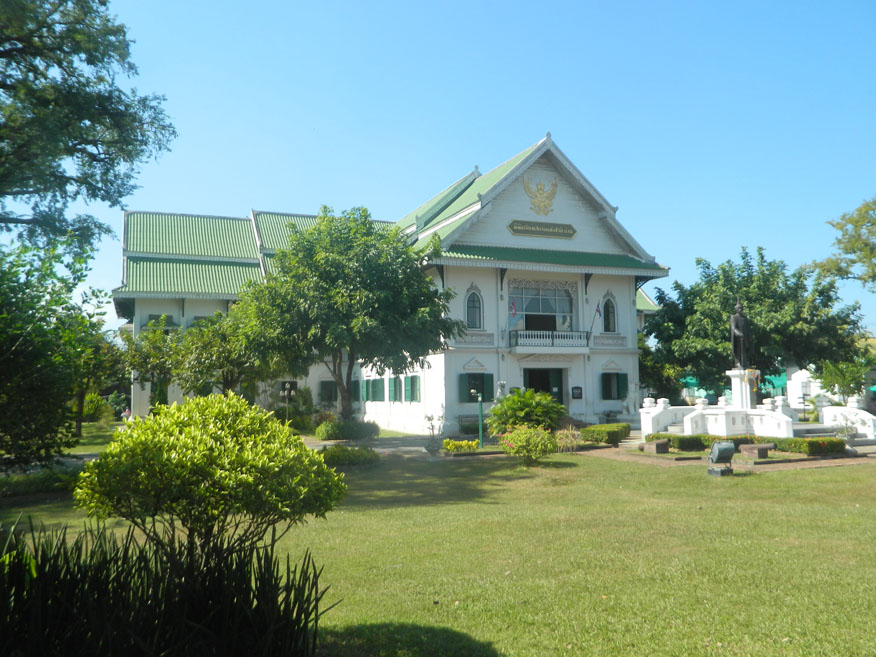Natural Thailand Tour - 17 November to 3 December 2014
Nan National Museum

|
Name: Nan National Museum
Location: Nan
Date Founded: 1903
Style: 20th century
Photo dated: 26th November 2014
The important temple, Wat Phumin in Nan is the most well-known in Nan Province. A chronicle of Nan says that the temple was founded in 1596 AD (B.E. 2139) by the Phrachao Chetabutpromin, the ruler of Nan. It was originally named after it's founder but was renamed later.
The National Museum of Nan is simultaneously an art history, archaeological and ethnological museum. The exhibitions are arranged to emphasise mainly these aspects in two parts. The exhibition rooms on the second floor feature art history and archaeological data and evidence. The room on the ground floor exhibits ethnological data concerning the native people and the minority groups living within the boundaries of Nan Province.
The exhibition rooms on the second floor dealing with art history include the main hall which was used as a throne hall by the Feudal Lords. Other rooms contain historical photographs, art objects, ancient currency, weapons and inscription. The rooms in the north and south wings, consisting of 6 exhibition rooms are used for exhibiting archaeological information going back to Prehistoric times, i.e. early settlements in Nan Province and art history from the Sukhothai and Lanna periods. The final room exhibits black elephant tusks. These tusks are treasured as a symbol of Nan Town going back to ancient times.
The 6 exhibition rooms on the ground floor are also divided into two sections. The main hall and two other exhibition rooms in the north wing are used for exhibiting ethnological data concerning the native peoples’ way of life, e.g. house design. Cooking and other utensils used in everyday life, cloth weaving in various styles and evidence of local customs, rituals and beliefs. The second section is composed of a hall and two other rooms in the south wing. They concentrate on the 5 minority groups found in Nan Province, the Thai Lue, Hmong, Yao, Thin and Malabri. Realistic models of the different groups are displayed.
|

